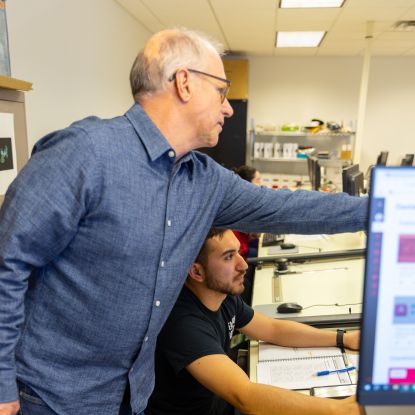

I want to help students succeed. One of the things we do in our first year class is to create an electronic portfolio, a resume, and a LinkedIn account.
CAD designers and drafters influence the development of most products we use in our daily lives, which makes this a consistently strong profession to work in.
The education you’ll get from the state-of-the-art curriculum in Waubonsee’s Computer Aided Design Program includes work with the industry’s leading software.
Classes are taught by faculty with decades of active, real-world experience, and they care for the success of each individual student—which means you can get the knowledge you need for the career you want.
Waubonsee’s up-to-date learning labs are high-tech settings for students to study everything from basic drafting to rapid prototyping and reverse engineering. New this fall: a plethora of new equipment, including Stratasys F370CR, with a maximum build size of 14 x 10 x 14 in, as well as the F190™CR and the F370®CR, two composite printers that offer high-strength carbon fiber materials in a reliable, user-friendly industrial printer platform.
Students learn 2-D, 3-D, and solid modeling using Autodesk products such as AutoCAD 2-D, 3-D, Inventor and Revit. SolidWorks is used to teach modeling and parametric design.
Our commitment extends beyond the classroom, too: Waubonsee boasts strong relationships with industry partners that enable students to complete internships and start working in specific areas of emphasis or concentration that most appeal to you.

I want to help students succeed. One of the things we do in our first year class is to create an electronic portfolio, a resume, and a LinkedIn account.
Waubonsee prepares CAD students to work in many tech-forward industries, including aerospace, architecture, automotive, energy, manufacturing, packaging and more—or students can continue their education toward a bachelor's degree.